Recent research has suggested that Frederick Douglass (1818-1895) was the most photographed American of the nineteenth century. The former slave who became a leading intellectual and civil rights campaigner of his age, was captured on camera more times than George Custer, Walt Whitman, even Abraham Lincoln.
There are certainly photographs of Douglass that predate his tours of Scotland as a fiery young orator in 1846, promoting his stunning new autobiography and denouncing the hateful system of slavery in the United States. But the only surviving images of him from this overseas trip are engravings. This might surprise us.
The Scottish press regularly carried advertisements for studios offering to take dageurreotype portraits of those who could afford them. And, since 1843, David Octavius Hill and Robert Adamson had produced hundreds of calotypes depicting people, buildings and landscapes in Edinburgh and Fife.
If there is currently no evidence that they photographed Douglass, they did take portraits of many eminent Scots of the day. They included several whom Douglass met – or at least sparred with on the page or lecture platform – as he engaged with the country’s literature, science, history and politics.
Here are ten of them.
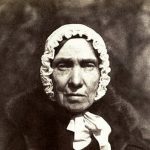 |
Isabella Burns Begg. Douglass had long been an admirer of Robert Burns. When he made the obligatory pilgrimage to his birthplace near Ayr, he met the poet’s youngest sister. ‘Though approaching 80,’ he wrote, ‘she does not look to be more than sixty. She enjoys good health, is a spirited looking woman, and bids fair to live yet many days.’ She and her daughters ‘did everything to make our call agreeable.’ |
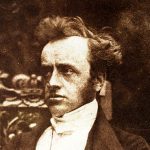 |
Robert Candlish. When this Free Church minister expressed misgivings over the American churches’ relaxed attitude to slavery, one of its principal donors in South Carolina was furious. Candlish soon toed the line and worked hard with Cunningham to win over the sceptics with the fudging declarations at the General Assembly in 1846 that so disappointed Douglass and the abolitionists. |
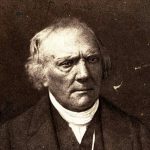 |
Thomas Chalmers. Revered as the man who led the exodus from the established church to form the Free Church of Scotland in the ‘Disruption’ of 1843, Chalmers cultivated the support of evangelical Presbyterians in the United States. The tortuous distinctions between ‘sin’ and ‘sinner’ he used to justify the relationship were roundly mocked by Douglass (‘Oh! The artful Dodger’), who quoted him sarcastically, showing how his words lent succour to the pro-slavery cause. |
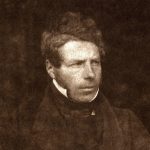 |
Robert Chambers. The (anonymous) author of the best-selling Vestiges of the Natural History of Creation (1844) and, with his brother William, one of the most influential publishers and editors of the period. The Chambers’ Edinburgh Journal reviewed Douglass’ Narrative in January 1846 and Douglass probably met them that summer. He may have wanted to explore the possibility of a Scottish edition of his book, although in the event this did not come to pass. |
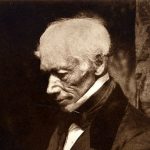 |
George Combe.The leading British exponent of phrenology invited Douglass to breakfast in June 1846, reporting that ‘he has an excellent brain. His benevolence and veneration are both large and his conscientiousness is full, while his intellect is vigorous and practical.’ For his part, Douglass later recalled with ‘much satisfaction the morning spent with this singularly clear-headed man,’ whose most celebrated work, The Constitution of Man, ‘had relieved my path of many shadows.’ |
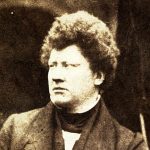 |
William Cunningham.Leader of the Free Church fund-raising delegation to the United States. With Chalmers in failing health it was left to him and Candlish to manage dissenting voices in the church who were uncomfortable with the donations from slaveholders. Of Cunningham’s manoeuvres, Douglass remarked, ‘I tell you why he does it. He’s got the bawbees.’ But even Douglass recognised his ability. ‘He was the only man in the Assembly who put forward anything like an argument.’ |
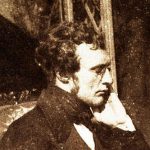 |
George Gilfillan. In January 1846 the Secession minister welcomed Douglass to Dundee and had him speak at his church in School Wynd, despite the objections of some of those on the managing committee, who subsequently resigned. The author of three volumes of Literary Portraits, who counted Carlyle and de Quincey among his friends, Gilfillan later proclaimed Douglass ‘the Burns of the African race’. |
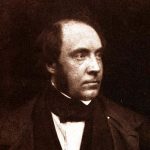 |
George Lewis. A member of the Free Church delegation that solicited funds in the United States, he wrote memorably about the trip in Impressions of America (1845), but was the target of Douglass’ withering wit, especially in Dundee where he was minister of St David’s Church. ‘Mr Douglass’s mimicry of the Rev. Mr Lewis was in very bad taste,’ remarked the Perthshire Advertiser. His audience, though, were thrilled by the impersonation. |
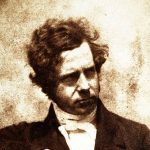 |
John MacNaughtan. The Free Church minister in Paisley described Douglass as an ‘ignorant runaway slave who had picked up a few sentences.’ Douglass promptly replied: ‘The man whose pockets are lined with the gold with which I ought to have been educated, stands up charging me with ignorance and poverty. I should like to see the inside of his breast; there cannot be a heart of flesh there. Shame on him.’ |
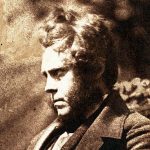 |
Hugh Miller. Editor of the Witness, a widely-read twice-weekly newspaper sympathetic to the Free Church. Miller devoted many column inches to satirising Douglass and his fellow campaigners who ‘set, by their extremeness, a fool’s cap on a good cause.’ Their irreligious brand of abolitionism, he claimed, was ‘not indigenous to Britain’ but ‘exported wholesale across the Atlantic.’ |
Photo Credits
- Isabella (Burns) Begg, 1771-1858. Youngest sister of Robert Burns[a] [detail]. Robert Adamson & David Octavius Hill. National Galleries of Scotland
- Dr Robert Smith Candlish, 1807-1873. Of St George’s Edinburgh; Principal of New College [b] [detail]. Robert Adamson & David Octavius Hill. National Galleries of Scotland
- Thomas Chalmers, 1780-1847. Preacher and social reformer [f] [detail]. Robert Adamson & David Octavius Hill. National Galleries of Scotland
- Robert Chambers, 1803-1871. Author and publisher [a] [detail]. Robert Adamson & David Octavius Hill. National Galleries of Scotland
- George Combe, 1788-1858. Phrenologist [detail]. Robert Adamson & David Octavius Hill. National Galleries of Scotland
- Dr William Cunningham, 1805-1861. Principal of New College, Edinburgh, 1947 [sic] [detail]. Robert Adamson & David Octavius Hill. National Galleries of Scotland.
- George Gilfillan and Dr Samuel Morrison Brown [Group 109] [detail]. Robert Adamson & David Octavius Hill. National Galleries of Scotland
- George Lewis, 1803-189. Of Dundee and Ormiston; Free Church minister; editor of the Scottish Guardian [a] [detail]. Robert Adamson & David Octavius Hill. National Galleries of Scotland
- John MacNaughtan, 1807-1884. Of Paisley and Belfast; Free Church minister [a] [detail]. Robert Adamson & David Octavius Hill. National Galleries of Scotland
- Hugh Miller, 1802-1856. Geologist and author [g] [detail]. Robert Adamson & David Octavius Hill. National Galleries of Scotland
|









